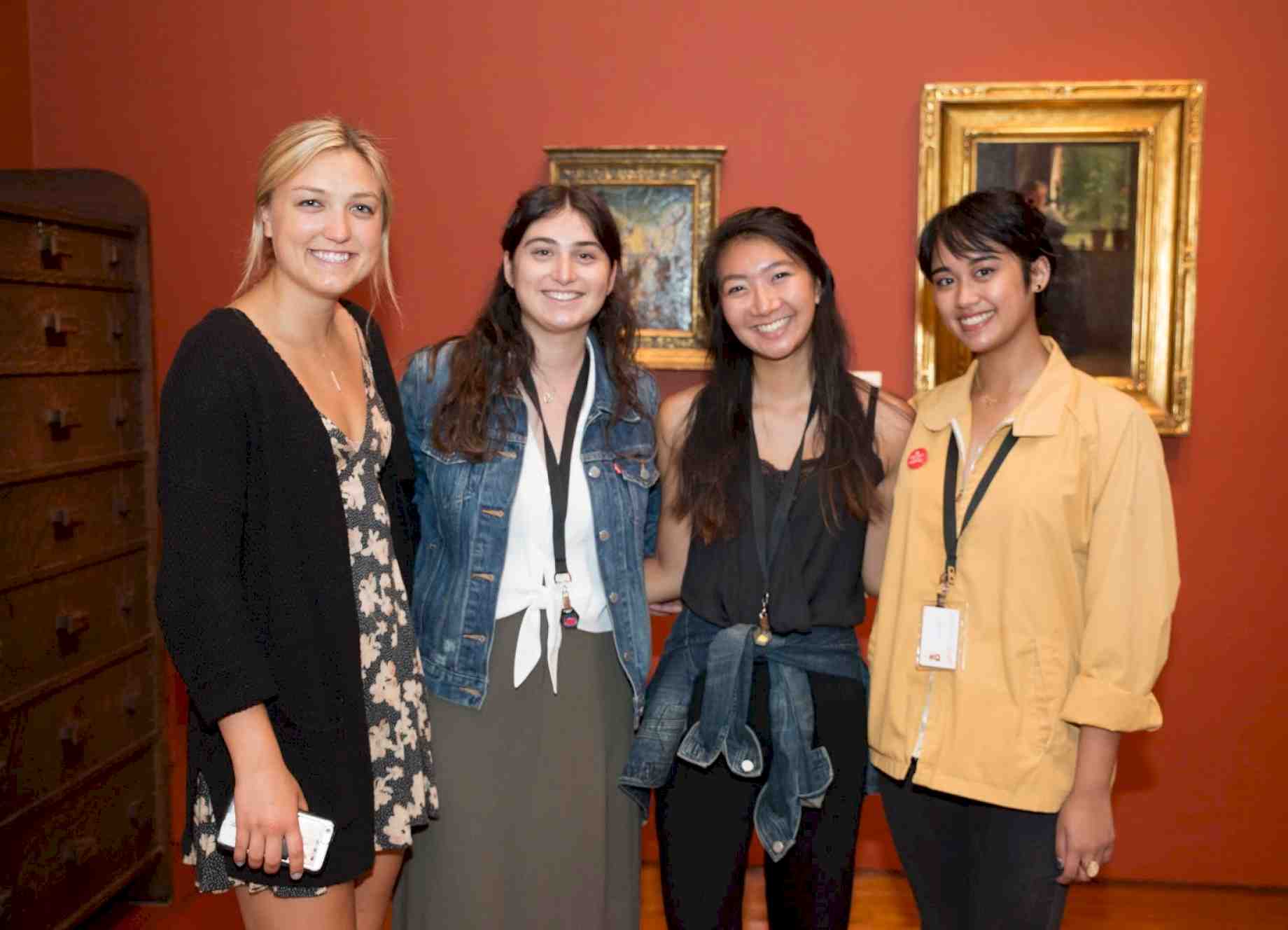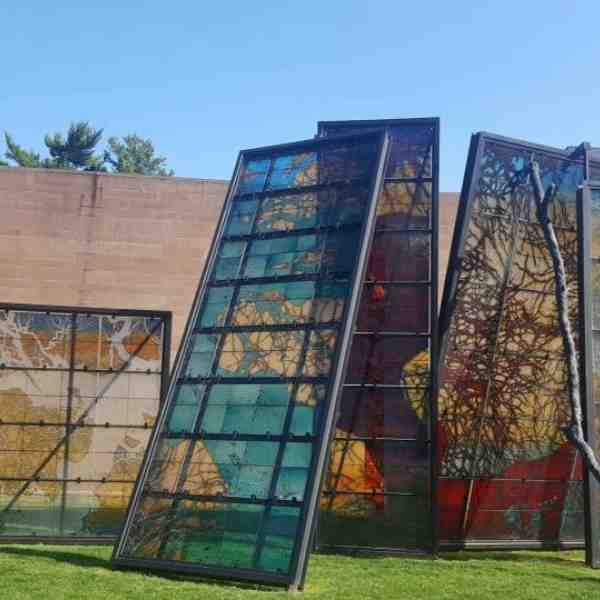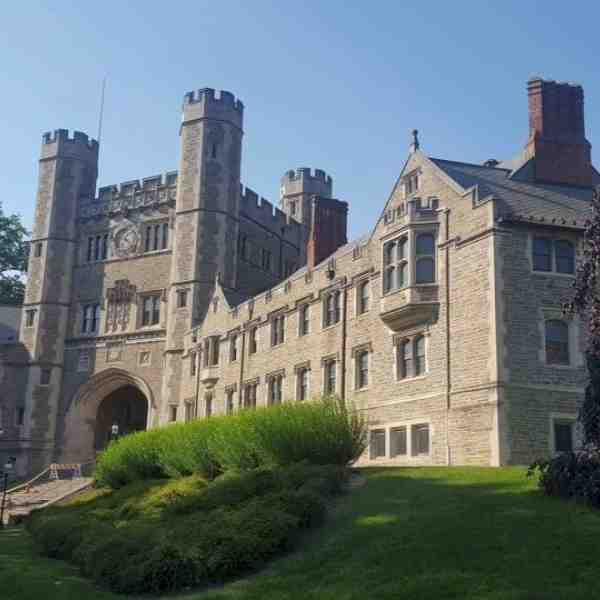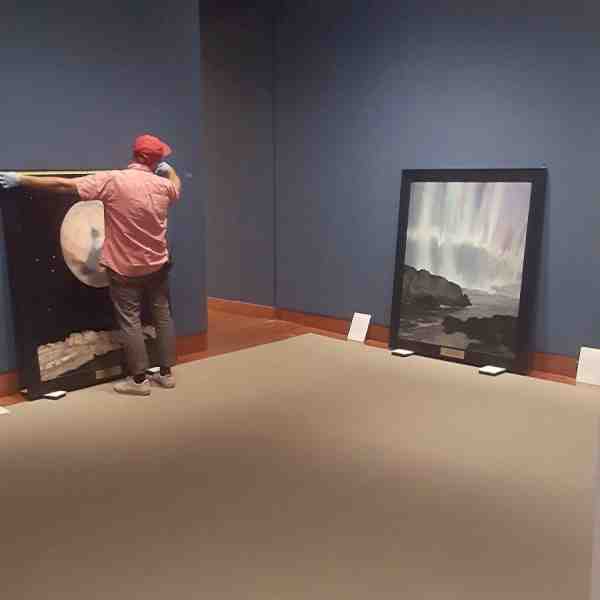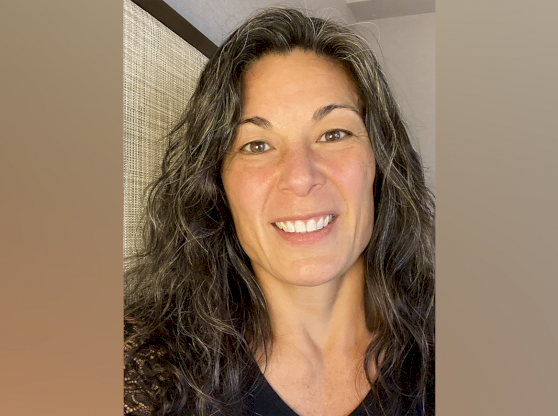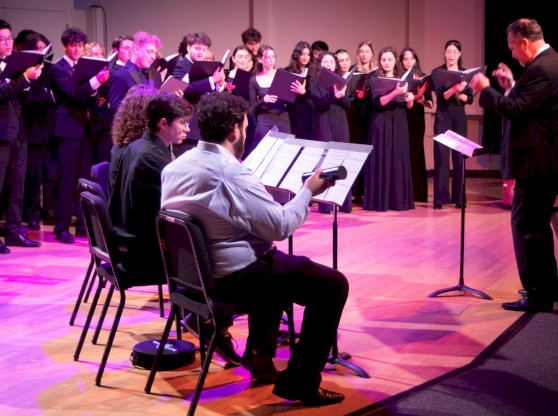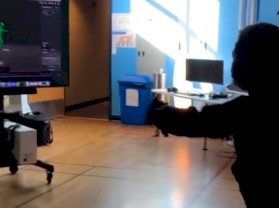Princeton’s campus was a beautiful sight indeed, with its Gothic architecture, vibrant gardens, and collection of public sculptures; one can only imagine the splendor of its warm colored trees and castle-like dormitories in autumn.
This past summer, I worked in the Campus Collections department and the Modern and Contemporary Art department at the Princeton University Art Museum, primarily working on the exhibition entitled Making History Visible: Of American Myths and National Heroes (running September 26, 2017 – January 14, 2018). The exhibition is one component of the campus-wide Princeton and Slavery research project, an initiative that explores the university’s complex connections to the institution of slavery. The museum also commissioned Titus Kaphar, contemporary African American artist, to create a public art monument that will be installed at the president’s house in memory of the enslaved family who served Princeton’s fifth president, and who were subsequently auctioned off on the front lawn after his death.
Making History Visible aims to reveal hidden narratives in visual art and art history, featuring some works by Kaphar as well as other contemporary African American artists, like Kara Walker, Carrie Mae Weems, Glenn Ligon and Hale Woodruff. Their works critique and expand the canon of art history that is full of deifying, aggrandizing and heroic iconography of white, affluent leaders—a dominant historical narrative that excludes some voices and privileges others.
For the exhibition, I helped compile the object checklist, develop the exhibition themes, design various gallery layouts, write labels for every object and draft a magazine article. I also researched and selected eight public artworks for a walking/digital tour that operates in tandem with the Princeton and Slavery project, as well as developed web content for those objects on the Museum’s Campus Art website.
My curatorial internship was an unforgettable, enriching experience. The research I did on slavery in the 18th century, colonial American art and contemporary African American art will certainly inform my writing for my senior thesis. Because I am a determined proponent of diversifying the art world, I not only want to expand the number of voices heard, but to put our voices in conversation with one another. In my future research as an art historian, I hope to contribute my unique cultural perspective to highlight underrepresented minority artists and cultures, so that we may begin to move beyond tokenism in museum collections, exhibitions and the study of art history.
